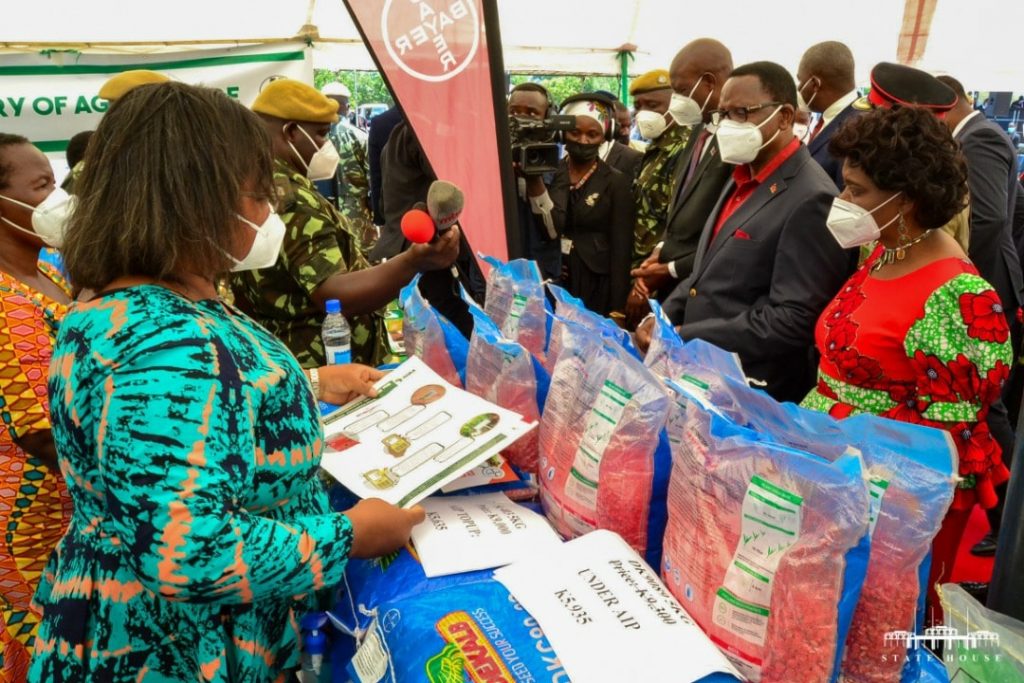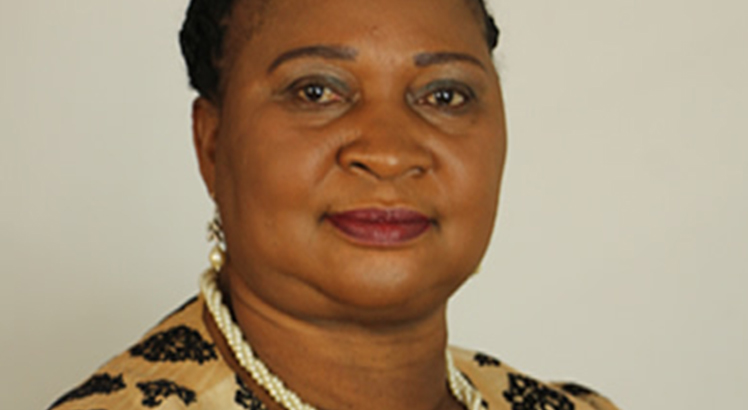Chakwera launches AIP, hints at exit strategy
President Lazarus Chakwera on Saturday launched this year’s Affordable Inputs Programme (AIP) in Chiradzulu where he hinted that government is working on an “exit strategy” for the pogramme.
This year’s programme is designed to benefit 3.7 million farming households who will be expected to cough K7 500 for a 50 kilogramme (kg) bag, up from the highly heralded K4 495 implemented last year.

The launch comes amid concerns from experts that the programme is exerting pressure on the national budget, further asking for the Tonse administration to rethink the programme and consider an exit strategy.
While ostensibly acknowledging this concern on Saturday, Chakwera said one of the exit strategies for the AIP is ensuring that farmers’ incomes increase so that they can be weaned off the programme.
Said the President: “Another strategy we have employed is ensuring that projects that maximise the AIP are making progress. For instance, earlier this week I was in Liwonde inaugurating the Malawi Fertiliser Company’s Inland Terminal. Shortly, we will be commissioning the Linga Dam in Nkhata Bay with a capacity of 15 million cubic meters of water to be conserved for irrigation and other purposes.”
He also cited the Shire Valley Transformation Programme as another massive irrigation project that is underway, saying such developments will ensure that the AIP is put to optimal use, thereby changing the landscape of the agriculture sector.
But justifying the continued implementation of the programme during the launch on Saturday, Chakwera said in the first edition of the AIP, the country registered a 21 percent increase in maize production–from 3.8 million metric tonnes (MT) in the 2019/20 growing season to 4.6 million MT in the 2020/21 harvest.
He said: “This is the highest recorded maize production figure the country has ever attained. This reduced the proportion of households that were not able to meet their annual food requirement by 43 percent.”
After winning the June 23 2020 Fresh Presidential Election, the Tonse administration increased the number of AIP beneficiaries from its predecessor Democratic Progressive (DPP) administration’s 900 000 to 3.7 million, further fulfilling its campaign promise of reducing the cost of redeeming a bag of subsidy fertiliser to K4, 495.
The development led to a bloated AIP allocation of K160 billion in the 2020/21 Tonse government’s maiden budget, which was four times more than that of the DPP’S Farm Input Subsidy Programme (Fisp).
Minister of Finance Felix Mlusu is also on record as having said in June this year when he was presenting his budget statement that the AIP exerts pressure on the national budget and there was need to find a way to exit it.
He, however, justified its implementation saying it is a programme that was derived from an election campaign promise and government could not just scrape it.
In his speech during the launch, Chakwera said he was aware that some claim that making changes in the implementation of the AIP means that the Tonse administration is no longer fulfilling their promise.
He said: “But this kind of thinking that resists change is retrogressive. Change is not just inevitable, but healthy and necessary. It shows that something is alive and growing.”
The President also called for crop diversification and coordination between the Ministry of Agriculture and other ministries.
The Malawi leader said the AIP has also been instrumental in ensuring that his government makes progress in fulfilling two other campaign promises, namely job creation and wealth creation.
He said for the first time in Malawi’s history, over the past year, 72 private companies were awarded fertiliser contracts, compared to only two public institutions previously.
“In the process, over 3 000 retail outlets were opened, offering employment and wealth generation opportunities to hundreds of thousands Malawians across the AIP supply chain. This year, I expect the Ministry of Agriculture to work with all stakeholders in ensuring that the programme is even better, drawing on lessons from the past year,” said the President.
Chakwera hoped challenges of poor Internet connectivity, stocking of inputs, accessibility to financing for some companies and management of beneficiaries which characterised AIP last season will be dealt with in good time.
In July this year, the AIP came under scrutiny through a book published by Todd Benson, a senior research fellow at International Food Policy Research Institute (Ifpri), who argued that despite investing billions of kwacha each year in the food security initiative, an average 1.8 million Malawians still need relief food from the government and its partners.
In the book, titled Disentangling Food Security from Subsistence Agriculture in Malawi, Benson writes in part: “The success of these maize production programmes is dependent on good rains, but the burden they impose on the public budget is immense and there is no evidence that these programmes result in any structural transformation of smallholder production systems or in a strengthened commercial orientation for the sector.”
And in a joint analysis of the K1.9 trillion 2021/22 National Budget, the Economics Association of Malawi (Ecama) Oxfam in Malawi and Lilongwe University of Agriculture and Natural Resources (Luanar) also questioned the rationale behind continued allocation of huge resources to input subsidies to achieve food security when government also buys relief maize for vulnerable populations.





